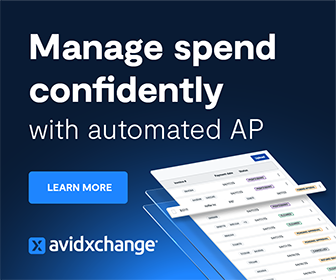Account reconciliation is a vital part of the financial closing process. Unfortunately, it’s also an area prone to bottlenecks. Typically, key balance sheet accounts require two levels of approval, but the time this takes can cause additional data to pile up and even reset the approval cycle.
Automation can help you streamline this process, giving you complete control through a single tool. Here are 5 benefits of automating your reconciliation process.
1. Reduces Your Operational Costs
Historically, the reconciliation process required the attention of your actual personnel. But automation can reduce this need by handling your manual (or semi-manual) processes. Automation software can manage your transactional data, eliminating the need for manual, external input.
As a result, you’ll have less need for employees to spend hours on routine, repetitive tasks and more time for them to work on other essential projects.
In other words, automating your reconciliation procedure empowers you to scale your business without hiring new employees. You may even discover that your workforce is happier with an expanded set of responsibilities, instead of having to invest their time in manual processes.
Additionally, automation can minimize errors that creep in from manual data entry. It also reduces the resources you’d otherwise spend on tracking down and correcting these errors.
2. Identifies Risk Immediately
Automation lets you identify, manage, and resolve risk with greater speed than ever before. The right software can automatically pinpoint errors and exceptions and can even classify risk situations without direct input.
Because it’s taking place on a state-of-the-art platform, you’ll be alerted to these risks more rapidly than relying on traditional processes.
The same software can likewise streamline the risk management process. An advanced platform can distribute and route the exceptions for follow-up and can also identify the person responsible for resolving the issue.
You can use the dashboard to track older issues to ensure timely resolution, which means that you’ll have greater control and efficiency thanks to your centralized software system.
3. Keeps You Audit-Ready
Never worry about another audit. The same platform that automates your financial process also keeps your data organized in one place, along with a clear separation of duties. This is a huge change from traditional processes that rely on an audit trail, where documents are easily lost or spread out among different systems.
A centralized database also enables you to keep your most important data in one place. Users can quickly see your list of procedures and best practices, which are centralized under your main dashboard.
This data can be accessed by your internal users but can also be accessed by external auditors. Having an automated software system provides complete transparency about your accounting and closing process, allowing your company to successfully pass an audit and comply with industry regulations.
4. Streamlines Your Reconciliation Activities
The reconciliation process contains many moving parts. Data must be integrated and verified from multiple departments, and when trial balances are updated, the approval cycle can be reset. Meanwhile, reconciliation and certification demand a minimum of two approval levels.
Automating your reconciliation activities ensures a smoother experience by standardizing these separate tasks, making it easy to bring new users into the process. And because the process is standardized, the steps and data can be made readily available during an audit.
The software also helps your teams stay organized. The system can send out automated reminders and past due notifications to keep employees on task, and managers can monitor their team’s productivity through a task management headcount.
As a result, you’ll experience more productive teams and cut down on the communication bottlenecks that can slow your reconciliation and closing activities.
5. Speeds Up Your Period-End Close
Automation software allows for more frequent matching, with trial balances updated daily. You can also use your automated software to redistribute your workload to make your closing process even faster. By working with near-real-time data, you and your teams can accomplish more in less time.
The centralized dashboard also helps you identify and address exceptions as they happen. But you can also use the dashboard to collaborate with other employees to streamline the process even further and stay on task by assigning action items.
You’ll likewise speed up your time to audit since auditing officers will have immediate and complete access to all of your data. Officers can even look at individual transactions for a greater level of detail without slowing down the process. Some platforms enable you to reconcile the general ledger as well.
Take a Deeper Dive into Account Reconciliation Automation
Explore the most common account reconciliation challenges coupled with the opportunities for process reinvention via automation on every level. Find your use case and learn how the traditional reconciliation inefficiencies are conquered by technology.
Click here to download now.
Why ReconArt?
These features are readily available through ReconArt, a state-of-the-art platform that offers automation and control to enhance every aspect of your business. With ReconArt, you can manage all stages of the reconciliation life cycle and use the platform to collaborate and coordinate with your team.
Forget the headaches of your typical reconciliation process. ReconArt can readily and flexibly integrate into your company’s administrative processes and continue to adapt to your evolving business needs.




